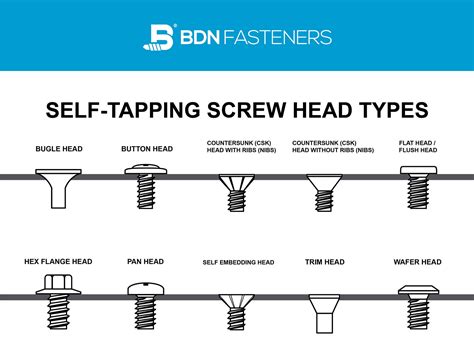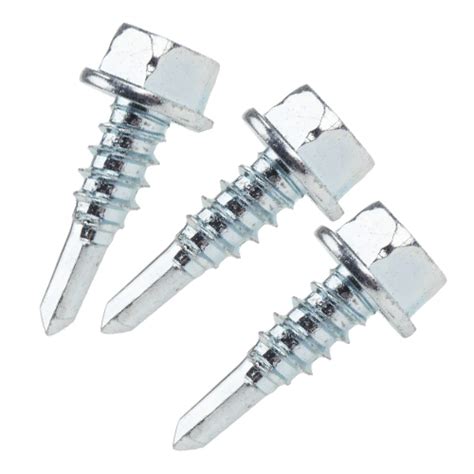drive a self tapping screw into electrical box by hand You can drill a 3/16" (or slightly smaller 11/64") pilot hole in the box and screw the self-tapping ground screw into it. If the grounding screws you have are not self-tapping, then . Electrical fittings are components used to connect, secure, and protect electrical wiring in various installations. They include a variety of items designed to work together to create safe and efficient electrical connections.
0 · self tapping screws instructions
1 · self tapping electrical screws
Types of CNC Programming. We’ve listed out the three main CNC programming methods that are beneficial to most types of CNC machining — although there are nicher types that exist, too. 1. Manual Manual programming is exactly how it sounds and is done by a programmer manually inputting information into the CNC machine’s control console.
You can drill a 3/16" (or slightly smaller 11/64") pilot hole in the box and screw the self-tapping ground screw into it. If the grounding screws you have are not self-tapping, then . We used those screws recently to mount some boxes to 5/16" steel tube. One other thing I would note is that a self drilling screw has the drill tip designed to drill its own hole in the . You could always drive a self tapping screw into the back of the box to connect your ground wire if you can't find a 10-24. If the box is not grounded and a live conductor comes .You can insert self-tapping screws with either a hand-held or electric screwdriver. Before you use self-tapping screws, it's helpful, although not mandatory, to drill a pilot hole through the material. This ensures the screw will go in easily and will .
Learn how to choose and use self-tapping screws for different materials. This guide covers thread-forming and thread-cutting screws, their sizes, styles, and installation methods. Self-tapping screws are a versatile and .In this comprehensive guide, we will walk you through the step-by-step process of using self-tapping screws effectively, ensuring secure and long-lasting results. From selecting the right screws to mastering the installation technique, we’ll .
For sheet metal enclosures like a formed electrical box they would use self tapping sheet metal screws like the OP describes. the holes give you a start so you don't end up on the edge, or the electrician can install/ remove or replace . By understanding the basics of self-tapping screws, identifying the materials and screw type, measuring the screw diameter, and following the step-by-step process, you can confidently drill the correct size hole every time.

nema 3 electrical box
You can drill a 3/16" (or slightly smaller 11/64") pilot hole in the box and screw the self-tapping ground screw into it. If the grounding screws you have are not self-tapping, then you will also need to tap the hole, but most grounding screws self-tap. We used those screws recently to mount some boxes to 5/16" steel tube. One other thing I would note is that a self drilling screw has the drill tip designed to drill its own hole in the metal, a self tapping screw is designed to go into a hole already drilled or punched in the metal. Guy attached a contactor into a box with Sheet metal self tapper. Seems to me it should be at minimum a Tapped hole with screw of a 32pi thread count. I don't see how the self tapper will securely fasten the contactor to the enclosure. We're talking about two different screw types, shelf tapping sheet metal screws (non-compliant) and self tapping thread forming screws (compliant). Sheet metal screws do not comply with the minimum threads per inch.
You could always drive a self tapping screw into the back of the box to connect your ground wire if you can't find a 10-24. If the box is not grounded and a live conductor comes into contact with the box, the breaker will not trip and the box will be live.You can insert self-tapping screws with either a hand-held or electric screwdriver. Before you use self-tapping screws, it's helpful, although not mandatory, to drill a pilot hole through the material. This ensures the screw will go in easily and will be positioned correctly. Learn how to choose and use self-tapping screws for different materials. This guide covers thread-forming and thread-cutting screws, their sizes, styles, and installation methods. Self-tapping screws are a versatile and reliable fastening solution for . In this comprehensive guide, we will walk you through the step-by-step process of using self-tapping screws effectively, ensuring secure and long-lasting results. From selecting the right screws to mastering the installation technique, we’ll cover everything you need to know.
For sheet metal enclosures like a formed electrical box they would use self tapping sheet metal screws like the OP describes. the holes give you a start so you don't end up on the edge, or the electrician can install/ remove or replace the .
By understanding the basics of self-tapping screws, identifying the materials and screw type, measuring the screw diameter, and following the step-by-step process, you can confidently drill the correct size hole every time.
You can drill a 3/16" (or slightly smaller 11/64") pilot hole in the box and screw the self-tapping ground screw into it. If the grounding screws you have are not self-tapping, then you will also need to tap the hole, but most grounding screws self-tap. We used those screws recently to mount some boxes to 5/16" steel tube. One other thing I would note is that a self drilling screw has the drill tip designed to drill its own hole in the metal, a self tapping screw is designed to go into a hole already drilled or punched in the metal. Guy attached a contactor into a box with Sheet metal self tapper. Seems to me it should be at minimum a Tapped hole with screw of a 32pi thread count. I don't see how the self tapper will securely fasten the contactor to the enclosure. We're talking about two different screw types, shelf tapping sheet metal screws (non-compliant) and self tapping thread forming screws (compliant). Sheet metal screws do not comply with the minimum threads per inch.
You could always drive a self tapping screw into the back of the box to connect your ground wire if you can't find a 10-24. If the box is not grounded and a live conductor comes into contact with the box, the breaker will not trip and the box will be live.
You can insert self-tapping screws with either a hand-held or electric screwdriver. Before you use self-tapping screws, it's helpful, although not mandatory, to drill a pilot hole through the material. This ensures the screw will go in easily and will be positioned correctly. Learn how to choose and use self-tapping screws for different materials. This guide covers thread-forming and thread-cutting screws, their sizes, styles, and installation methods. Self-tapping screws are a versatile and reliable fastening solution for . In this comprehensive guide, we will walk you through the step-by-step process of using self-tapping screws effectively, ensuring secure and long-lasting results. From selecting the right screws to mastering the installation technique, we’ll cover everything you need to know.
For sheet metal enclosures like a formed electrical box they would use self tapping sheet metal screws like the OP describes. the holes give you a start so you don't end up on the edge, or the electrician can install/ remove or replace the .
self tapping screws instructions

Sheet metal brackets are used in a wide variety of industries and applications, including: Electrical and electronic areas: Brackets support electrical components, circuit boards, and housings. Automotive field: The bracket can fix the battery, exhaust system, engine bracket, and other components.
drive a self tapping screw into electrical box by hand|self tapping electrical screws